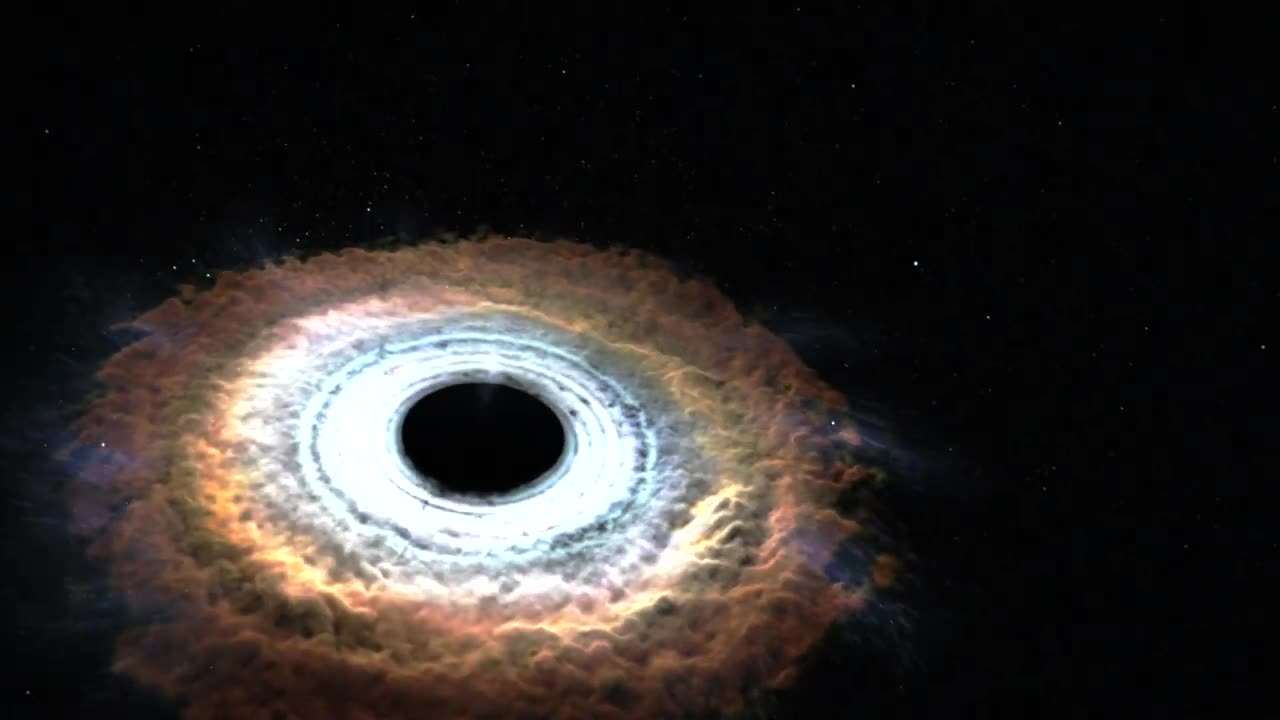Premium Only Content

Massive Black Hole Shreds Passing Star
**YouTube video description:**
This video describes a tidal disruption event, a rare phenomenon that occurs when a star wanders too close to a black hole and is ripped apart by the black hole's intense gravitational forces. In some cases, some of the stellar debris is flung outward at high speed, while the rest falls toward the black hole. This causes a distinct X-ray flare that can last for a few years.
The video focuses on a tidal disruption event called ASASSN-14li, which was discovered in November 2014. The event occurred near a supermassive black hole estimated to weigh a few million times the mass of the sun in the center of PGC 043234, a galaxy that lies about 290 million light-years away.
The video describes how the tidal disruption event unfolded:
1. The star wandered too close to the black hole.
2. The black hole's tidal forces ripped the star apart.
3. Some of the stellar debris was flung outward at high speed, while the rest fell toward the black hole.
4. The infalling material formed filaments.
5. The filaments merged into a smooth, hot disk glowing brightly in X-rays.
6. The central region of the disk heated up tremendously, which drove a flow of material, called wind, away from the disk.
Astronomers hope to find more events like ASASSN-14li to test theoretical models about how black holes affect their environments.
**Key points:**
* Tidal forces are differential gravitational forces that stretch and squeeze objects.
* A supermassive black hole is a black hole with a mass that is at least a million times the mass of the sun.
* An X-ray flare is a sudden and temporary increase in the X-ray emission from an astronomical object.
* A gaseous filament is a long, thin thread of gas.
* An accretion disk is a rotating disk of material that is spiraling inward towards a central object.
* A wind is a stream of gas that is flowing away from an astronomical object.
**Why tidal disruption events are important:**
Astronomers are interested in tidal disruption events because they can provide information about the behavior of supermassive black holes and the environment around them. By studying tidal disruption events, astronomers can learn more about how supermassive black holes grow and how they interact with the galaxies in which they reside.
-
 LIVE
LIVE
Crypto Power Hour
8 hours agoPsychology Of Crypto Market Cycles
2,041 watching -
 9:58
9:58
Clintonjaws
12 days ago $0.07 earnedKaroline Leavitt's Response To 'The View' Host's Nasty Attacks Is Perfect
1172 -
 24:23
24:23
World2Briggs
17 hours agoTop 10 Towns You Can Retire on $1900 a month in the Pacific North West.
1313 -
 21:23
21:23
Lady Decade
14 hours ago $0.03 earnedThe Lost Sega Neptune Console Refuses To Die !
2.03K -
 17:14
17:14
ThinkStory
20 hours agoIT: WELCOME TO DERRY Episode 2 Breakdown, Theories, & Details You Missed!
4.84K -
 17:25
17:25
Real Estate
1 month agoThe Job Market Collapse IS HERE
1434 -
 LIVE
LIVE
BEK TV
22 hours agoTrent Loos in the Morning - 11/05/2025
187 watching -
 LIVE
LIVE
The Bubba Army
21 hours agoUPS PLANE EXPLODES - What Went Wrong? - Bubba the Love Sponge® Show | 11/05/25
2,454 watching -
 16:38
16:38
James Klüg
19 hours agoFOOD STAMPS RAN OUT, Will People Loot?
13.8K29 -
 23:56
23:56
Producer Michael
17 hours agoBuying My Wife a $500,000 Diamond Necklace!
10.7K10